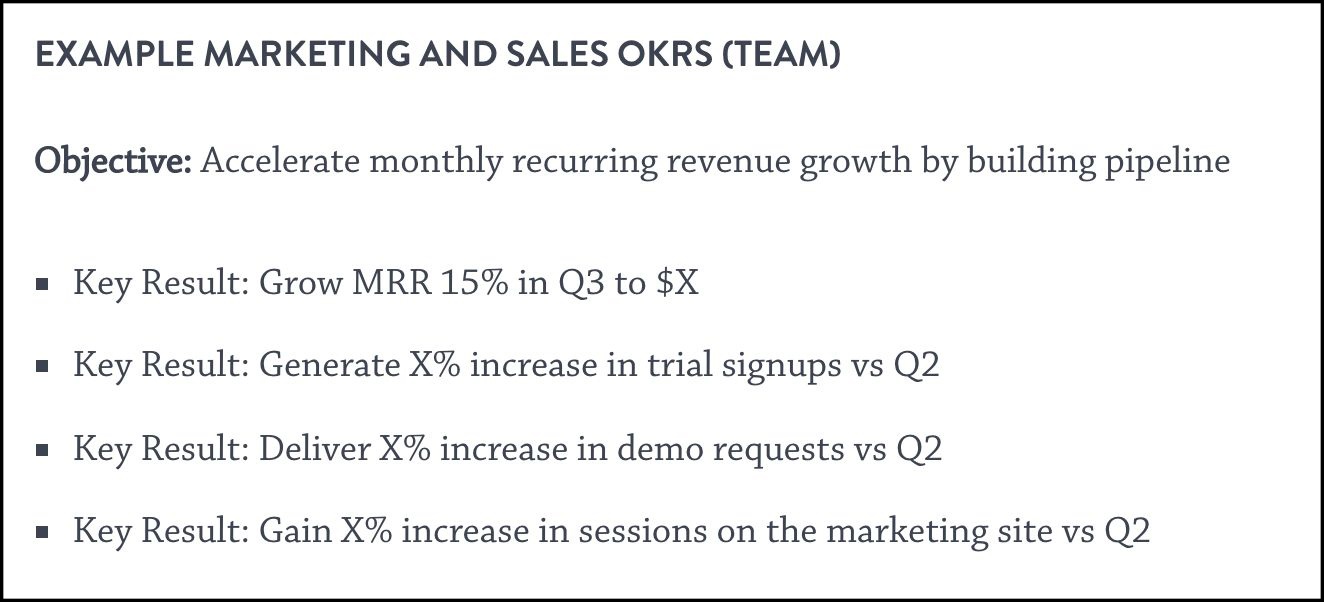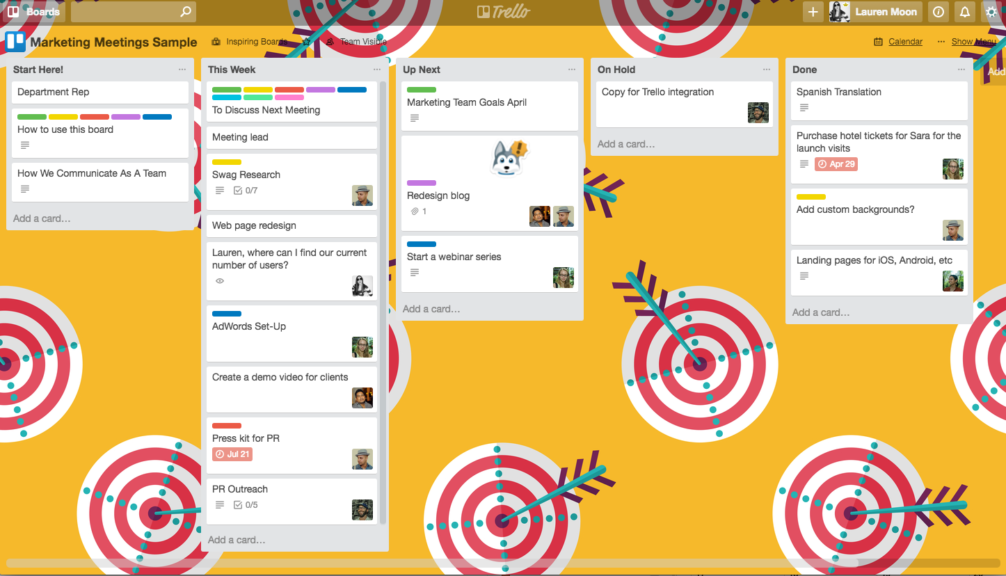
Imagine your company as a rowing team all rowing in different directions. Not only would you certainly lose the race, you’d likely capsize. Or, imagine two of your team members refusing to row because they have no direction: aimless and making the other team members frustrated. A team rowing together towards a shared end goal, on the other hand, is far more likely to win.
The same is true in business. A recent survey revealed that small and medium-sized businesses (SMBs) in the US who set and track key metrics are two-times more likely to hit their targets than those who don’t.
If your team members know what you’re working towards together, everyone is able to make strategic decisions to make improvements autonomously or as a team. To do so, they need to know three things:
- What are the goals?
- How is the company tracking towards those goals?
- What impact are those goals specifically having?
That doesn’t mean you need to share every number available to the CEO — that would get messy and confusing. Rather, you need to share key data that has an impact on your team’s work.
With that, here are five team-building exercises that will get you on the path to setting goals you’ll actually stick to:
Set your mission: The mark you want to make
Surely you’re building something awesome that people can (and want to) get behind. Your current team members are probably there because they’re passionate about the problem you’re solving or opportunity you’re creating. One of the best team building exercises to start with can be uniting those passions into a mission statement. Communicating that mission in an effective and consistent way to new team members is crucial, and it can be challenging.
When crafting and communicating your mission, focus on these best practices:
- Simple and clear: Your mission statement should be easy to understand.
- Honest and authentic: It should reflect what your business does and the change it seeks to make. It should be reflected in the everyday actions of your entire team.
- Obvious: Put your mission statement where everyone in the office or on your team can see it to act as a reminder of the Why behind their daily work.
- Bold: Your mission statement is an opportunity to demonstrate your company’s personality and culture.
Define your company’s goals: How you’ll make that mark

Unfortunately, that awesome mission statement you just wrote isn’t quite enough to get your entire team focused on growing your business. After all, you need money to make that mission come to life. And this isn’t golf we’re talking about – business is a team sport.
Your company needs other financial and growth goals that define how your team will achieve your mission. To make goal setting one of your team building exercises, each department and team member should define their own goals that get the company closer to reaching the mission. Make these goals clearly defined and measurable. Otherwise, your team won’t be able to track their progress against them.
One way to define measurable goals is by identifying key metrics (with a target goal) for each person using the cascading model. To illustrate, let’s say the overall company goal is to increase monthly recurring revenue (MRR) by X% this quarter. A marketing team KPI might be to increase trial signups by whatever number necessary to reach the MRR goal.
Cascading the overall metric further, a content marketer’s goal might be to increase organic sessions by whatever number necessary to hit the trial signups goal. In other words, don’t go chasing waterfalls – build them instead.
Tracking and sharing key metrics matters, too. Seventy-seven percent of surveyed businesses that didn’t set and regularly monitor KPIs (key performance indicators) remained small in scale. Those who did set and track KPIs were far more likely to hit their targets: 96% hit some of their targets and 41% hit all of their targets.
Choose your framework for setting priorities
Be warned, goal setting can get out of hand, and fast. With each goal comes a thousand different ways to achieve it. In all likelihood, you and your team came up with a laundry list of different tactics to accomplish for each goal. To build a team that’s truly focused around your goals, prioritize each of these activities to keep everyone rowing in the same direction.
There are several frameworks that have been tested and proven effective for different teams. None of them are one-size-fits-all, so try out a few different ones until you find the one that works best for your team. From there, you’ll likely make adjustments to find what fits best. Here are a couple to start with:
The Golden Circle: Coined by Simon Sinek in a TED talk on How Great Leaders Inspire Action, this framework is also known as “Start with why.” The idea is to ask yourself, “Why are we doing this and how does it help achieve our mission?” when considering any activity. From there, you can identify how you’ll achieve it, then what the actual product or service will be.

Apple’s why is to challenge the status quo and do things differently. They do so (their how) by creating beautifully designed products that are user-friendly. Their what (what they sell) is sleek, powerful, and easy to use computers, phones, tablets, watches, and more.
Buyer personas: Another option is to start your prioritization by defining who in your target audience each activity is going to benefit. The idea is to ensure every activity is intentionally geared for a particular segment of your audience. Much like “Start with why,” you’ll ask yourselves, “Who is going to benefit from this?” If the answer isn’t the person who’s most likely going to do the intended action at hand, that activity should be a lower priority.
Set metrics for measuring your goal progress
If you’re going to spend all that time setting goals and prioritizing projects, you should be measuring the impact of those activities. Otherwise, the spaghetti you’re throwing against the wall is just going to make a mess, rather than indicate whether or not your efforts are sticking to your goals.
Setting metrics is important on a team and individual-level, as ideas are often triggered by motivation – that’s why it goes on our list of key team building exercises. Be transparent with each other about how your efforts are contributing to team goals so you can all improve performance and find ways to have an even greater impact.
Like with prioritization, there are several frameworks for setting your metrics – depending on what works best for your team. Options include Pirate Metrics, IPA Metrics (important, potential improvement, authority), or OKRs (objectives and key results). No matter which framework you choose, all key metrics should be trackable, important, and explainable (or TIE).
We’re going to focus on OKRs, as they’re what we use at Geckoboard to set metrics for the marketing team. Invented by Intel and popularized by Google, OKRs are established by breaking each goal down into two questions: “What are you trying to achieve?” (objective) and “How will you achieve it?” (key results).
To set effective OKRs, keep these principles in mind:
- Set a timeline (the industry standard is typically three months)
- Focus on growth (your objectives should be competitive)
- Collaborate with your team (setting OKRs should be a group effort)
- Keep results measurable (quantify them by assigning numbers to each key result)
- Choose several key results for each object (3-5 is the standard)
Here’s an example of what OKRs might look like for a marketing team:

And if they were broken down for a particular role on the marketing team:

When measuring your key results at the end of the period, grade them on a scale of 0.0 to 1.0. Since objectives are intentionally ambitious, the sweet spot is around 0.6-0.7. If you’re achieving 1.0 on your key results, you’re not setting big enough objectives. It’s important to note that these grades shouldn’t be used as performance reviews, but rather ways to measure the effectiveness of your tactics.
Communicate metrics effectively with your team
You might be shocked to know how many leaders leave their employees in the dark when it comes to company performance. According to surveys, 70% of respondents said they don’t have insight into their company’s performance on a daily basis. And only 14% of businesses reported they monitor their KPIs in real-time. Yet, companies cited employees having clear objectives as being the most important factor contributing to business growth.
You need to empower your team with the information and tools they need to make strategic decisions: the data that will have the biggest impact on their role within the company. Here are a few team building exercises that can help you can effectively communicate your key metrics and data with your team.
Weekly 1:1s: Meet with your individual team members once a week to review their OKRs, progress on key metrics, and any roadblocks getting in the way of growth.
Weekly team meetings: Bring your team or department together once a week to review where you are for the month or quarter, set priorities for the week, share roadblocks, and anything individual members need help with. This is also a great opportunity to brainstorm around challenges and opportunities facing the team. At Geckoboard, the marketing team uses Trello to lead these meetings, with each person reporting on their respective projects.
Monthly all-hands meetings or townhalls: Usually led by your founder or CEO, monthly company-wide meetings are great for sharing high-level performance numbers, challenges, opportunities, and most importantly, company-wide victories. This is also a great time to answer any questions around company performance or data the team may have.
Live TV dashboards monitoring your key metrics: By displaying your company and each team’s key metrics on a glanceable dashboard where everyone can see it, you’re creating a culture of transparency and ownership. Dashboards are also effective for motivating your team to take action to get closer to their goals when lagging behind. Here are some tips for building an effective and well-designed dashboard.
Give team building exercises their due
Building a goal-focused team takes time, and trial and error. You likely won’t get it right the first time. (And if you do, please share your secrets with the world!) Be open to feedback from the team as you go through the different exercises, while testing different processes and frameworks. Just be sure to measure everything you do, and to share your findings, in order to rally support from the team!
Have you been successful at rallying your team around goals? Share your tips and advice (and awesome tools – like Trello) below!








































